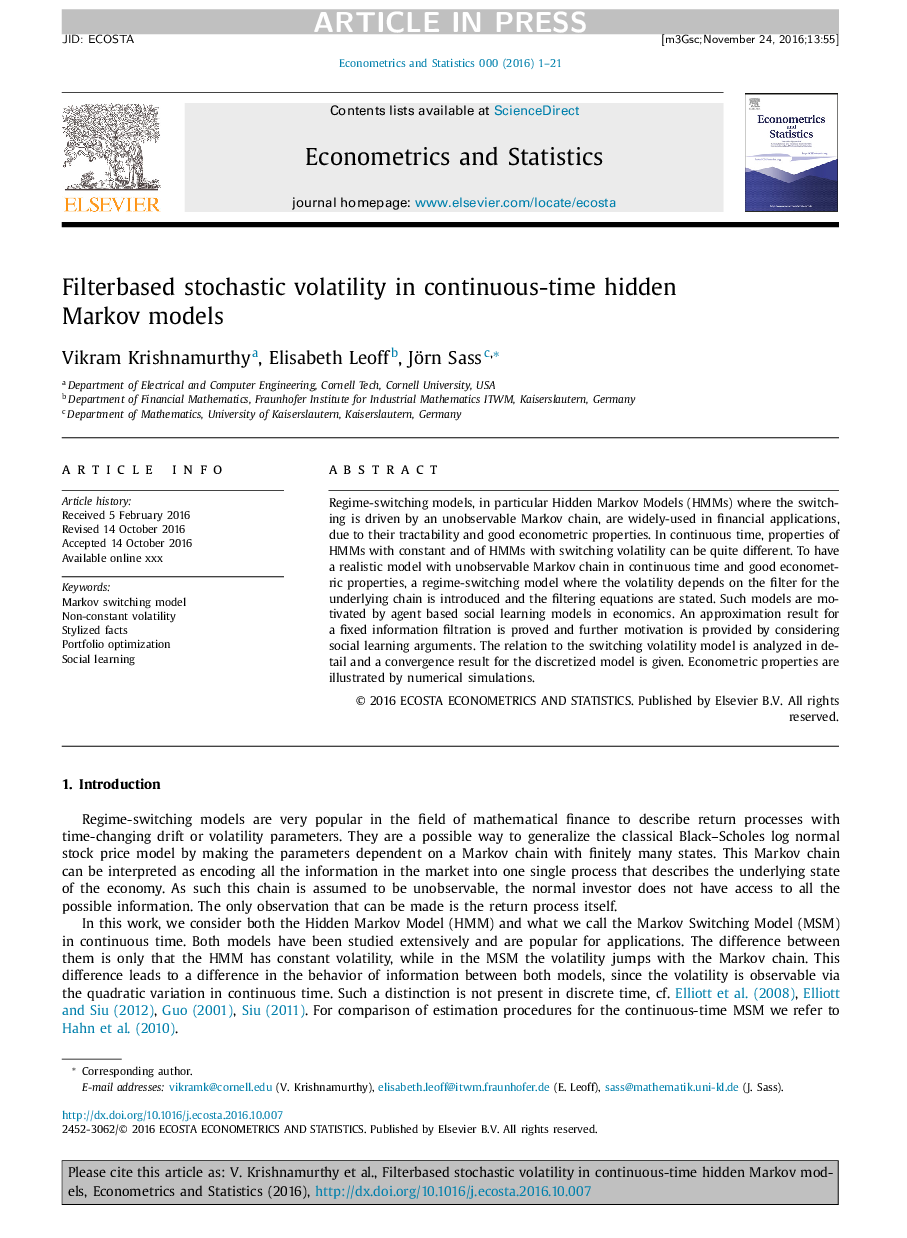| Article ID | Journal | Published Year | Pages | File Type |
|---|---|---|---|---|
| 8919467 | Econometrics and Statistics | 2018 | 21 Pages |
Abstract
Regime-switching models, in particular Hidden Markov Models (HMMs) where the switching is driven by an unobservable Markov chain, are widely-used in financial applications, due to their tractability and good econometric properties. In continuous time, properties of HMMs with constant and of HMMs with switching volatility can be quite different. To have a realistic model with unobservable Markov chain in continuous time and good econometric properties, a regime-switching model where the volatility depends on the filter for the underlying chain is introduced and the filtering equations are stated. Such models are motivated by agent based social learning models in economics. An approximation result for a fixed information filtration is proved and further motivation is provided by considering social learning arguments. The relation to the switching volatility model is analyzed in detail and a convergence result for the discretized model is given. Econometric properties are illustrated by numerical simulations.
Related Topics
Physical Sciences and Engineering
Mathematics
Statistics and Probability
Authors
Vikram Krishnamurthy, Elisabeth Leoff, Jörn Sass,
